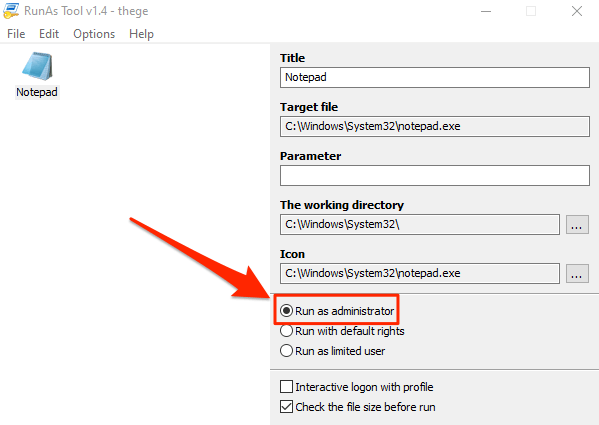Workaround Click Start, click All Programs, click Accessories, right-click Notepad, and then click Run as administrator. Open the Hosts or Lmhosts files, make the necessary changes, and click Save on the File menu.
How do I run a host file as an administrator in Windows 10?
Windows 10 and Windows 8 Press the Windows key. Type Notepad in the search field. In the search results, right-click Notepad and select Run as administrator. From Notepad, open the following File: c: WindowsSystem32Driversetchosts. Make the necessary changes to the File. Select File> Save to save your changes.
Can’t open the host’s File as an administrator?
Please get in touch with the administrator to get permission” error. Press the start menu or press the Windows key and start typing Notepad. Right-click on Notepad and choose Run as administrator. Now you can edit and save changes to your HOSTS File.

How do I change permissions on a host file?
Locate the host’s File, right-click on it, and choose Properties. Navigate to the Security tab and click the Edit button. You should see the list of users and groups on your PC to access the host’s File. If your username or group is listed, click it and ensure Permissions are set to Full Control.
How do I use a host file?
Windows 8 and 10 Press the Windows key (formerly Start menu); Use the search option and search for Notepad; Right-click on Notepad and select Run as administrator; From Notepad, open the host’s File at C: WindowsSystem32driversetchosts; Add the rule and save your changes.
How do I access my host’s File?
To find the location of the Windows hosts file: Navigate to Start > Search > Files and Folders. Select the host file in your Windows directory (or WINNTsystem32driversetc). Please verify that the File is not read-only by right-clicking it and choosing Properties. Open the File for editing with Notepad.
How do I save a host file without administrator rights?
To remove the read-only character, do this: Access C: WindowsSystem32driversetc. Locate the host’s File. Right-click on it and go to Properties. At the bottom, you should see attributes and uncheck the box next to it, read-only. Save the changes with Apply and confirm with OK.
How do I run Notepad as an administrator?
Locate the Notepad app on your computer. It can be on your desktop if you use it often. Open Notepad as an administrator using the right-click menu. Right-click on the app and select the option Run as administrator.
How do I add it to my hosFile’ile?
How do I add a static item to the host’s file? Open your text editor in administrator mode. In the text editor, open C: WindowsSystem32driversetchosts. Add the IP address and hostname—example: 171.10.10.5 opm.server.com. Save the changes.
Why does it say you need permission to perform this action?
Windows requires permissions for the actions you perform on your computer. Therefore, if your Windows user account does not have the correct licenses, you cannot access certain files or folders. When that happens, you get the error message “You need permission to perform this action.” It’s frustrating, sure.
What host file does?
A Hosts file is a file that almost all computers and operating systems can use to map a connection between an IP address and domain names. ThFileile is an ASCII text file. It contains IP addresses separated by a space and then a domain name. The Hosts file ignores it and moves to find the site via DNS.
What is the format of the host’s file?
The /etc/hosts file contains the Internet Protocol (IP) hostnames and addresses for the local host and other hosts on the Internet network. ThFileile converts a name to an address (that is, translates a hostname into its Internet address).
Where is the host’s file located?
The host’s file is a plain text that maps hostnames to IP addresses. On Windows, it is located in the C: WindowsSystem32driversetc folder.
What should my hosFile’ile look like?
The Hosts file contains lines of text consisting of an IP address in the first text field followed by one or more host names. Each area is separated by white space (tabs are often preferred for historical reasons, but spaces are also used).
What does the hosFile’ile do in Windows?
The host file is a Windows system file that can override DNS and redirect URLs or IP addresses to different locations. A typical home internet user does not have a custom host file.
What is the difference between the DNS and the host file?
Two answers. A host file is used by operating systems to manually specify the IP addresses for specific domains/subdomains – think of it as an override. However, DNS is a server – think of it as a registry – that keeps fields related to A records, MX records, etc.
Does nslookup use a hosFileile?
In response from Crypt32, the nslookup command does NOT use a host file but DNS. If you remove the DNS, you can use ping instead and return the IP address in your hosFile’ile.
Is it safe to edit the hosFile’ile?
The only thing that edits the Hosts file is to redirect an IP address, so it can’t adversely affect your system. † †
Why can’t I save my Hosts file?
You either need to take ownership of tFileile (right-click on the host’s file, Security tab, and give yourself full permissions) or open Notepad as administrator and open, edit,, and save your hosFile’ile from there. It is designed so that some rogue malware cannot get in and can change that.
